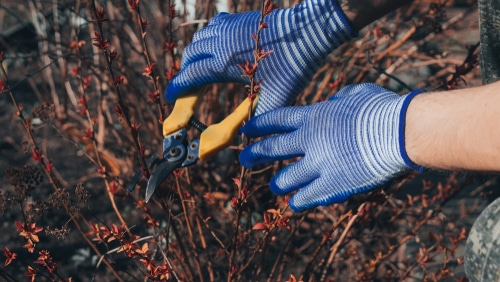Every gardener dreams of the perfect yard, full of flowers and shrubs that provide a pleasing view all year round.
No one minds some hard work to achieve a garden that delivers colorful blossoms in spring, summer, and fall. The sweet smell of flowers and the happy buzzing of bumblebees are a ready reward for all the time and effort it takes to achieve just the right look.
Every gardener knows that variety is the key to having a perfect yard. Alternating flowers with shrubs in each flowerbed provides balance.
With just a little research, it becomes obvious that there is one plant that has it all: It doesn’t require too much attention; it has the potential to bloom profusely; and, depending on the variety, its leaves provide a welcome change to the greenery surrounding it.
Have you guessed which plant we’re talking about? Yes, it is the spirea. Spirea shrubs are a great addition to any garden. They bloom tirelessly, and the beautiful blossoms add color to the landscape year after year. It is easy to spot the pink, purple, or white flowers.
Spirea require little maintenance to bloom time and time again.
But there is one essential action you need to perform to ensure your plant will continue to thrive: You need to prune it regularly, twice a year.
By taking the time to do this one thing, you will keep the plants looking full and lively. Their beautiful blooms are worth every tiny bit of extra effort.

Why Should I Prune My Spirea?
Spirea are stunning plants that provide color and variety to every landscape.
The shrub can grow to be anywhere from 3 feet to 10 feet tall. Its colorful flowers grow on new shoots every year. Therefore, it is essential to prune the plant regularly. This will promote blooming and ensures that the spirea is thriving year after year.
In addition to encouraging abundant flowers, trimming your shrubs allows new growth to get the sunlight it needs to develop into strong branches without being stunted by woody overgrowth.

Tools Needed for Pruning
There are a few essential tools you need to make the process quicker, faster, and successful.

First, grab a pair of clean pruning shears. If the shears are dirty, they may spread infections or diseases from plant to plant.
After each use, rub the shears with alcohol to kill any bacteria or fungi that may have contaminated the tool.
Dedicated pruning shears will help you make sharp cuts, making the trimming process quick and easy.
If you don’t have shears, then a hedge trimmer is a good tool to use. It will cut through thicker branches with ease.
The Best Times to Trim Are Spring and Fall
For your shrubs to thrive, you need to prune the plants at least twice a year.
Cutting back your spirea in late winter or early spring will allow your plant to be shaped into a hardy and fuller-looking plant.
Trimming the plant early in the year will give new growth the room and light to thrive after being dormant.
But it is equally important to prune your spirea at the end of its blooming season as well. This ensures that the plant will produce beautiful flowers year after year.
Once your shrub is done blooming and the flowers die back, get your pruning tools ready. Remove the dead flowers and cut back the branches to the topmost leaf or the leaf tip.
Trimming the plant after blooming allows the plant to refocus its energy. It may even encourage the spirea to bloom a second time.
Pruning in the fall involves cutting back the plant more drastically. Use your shears or hedge trimmer to cut back the shrub to about 8 inches above the ground.
Fall pruning will give the plant time to regain strength before going dormant for the winter. Then, it will be able to grow back strong and evenly next year. You will once again be able to enjoy its colorful blossoms.

Tips for Trimming
If you want a particular size or shape for your spirea, there’s an easy way to achieve it. Take a strong string or ribbon and tie the center of the plant tightly together. Then, take your shears and trim the branches right above the string.
Once you remove the string, you will have a perfectly rounded shrub. It might take a little practice, but in no time, you’ll have your spirea looking exactly the way you want it to.
If your spirea is truly struggling, you can resort to rejuvenation pruning to revive it. This drastic measure involves cutting the plant all the way down to the ground in late winter. Then, in the summer, cut out all woody stems.
The extreme cutting will allow the shrub to “reset” and begin to produce wonderful blooms again the next year.

Ultimately, it doesn’t matter how you trim back the plant. Just remember that pruning in the early spring or late winter is an incredibly important step to ensure healthy new growth and wonderful summer blossoms.
Conclusion
Spirea are a great way to add color and style to your garden. With adequate care, they can produce beautiful growth for years to come. By regularly cutting back its branches, you will have clusters of bright flowers among the foliage throughout the year.

